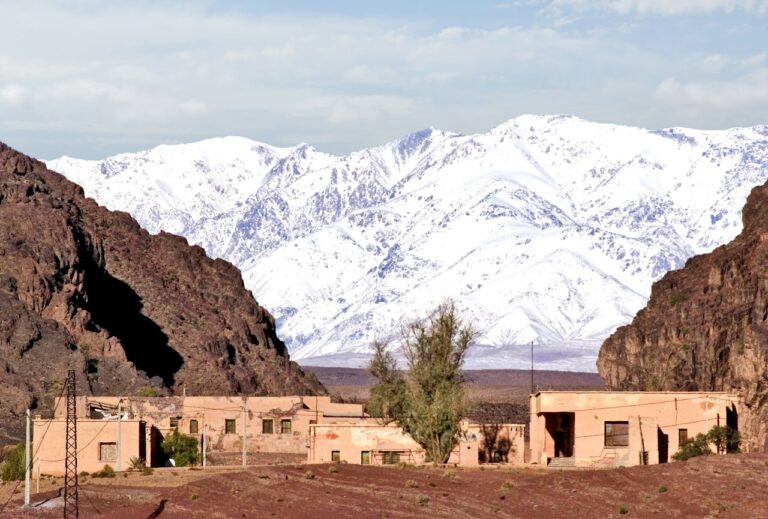
Morocco, located at the crossroads of Africa and Europe, is a country that exudes charm, history, and cultural diversity. From the bustling streets of Marrakech to the serene beauty of the Atlas Mountains, Morocco offers a range of experiences that make it a top destination for travelers. Whether you’re seeking adventure, history, or simply a new cultural perspective, Morocco should undoubtedly be on your bucket list. In this article, we will explore the key reasons why Morocco is a must-visit destination and why it continues to captivate travelers from around the world.
The Alluring Blend of Cultures and History
One of the primary reasons Morocco stands out as a must-visit destination is its rich and diverse cultural heritage. Throughout its history, Morocco has been a crossroads for different civilizations, including the Berbers, Arabs, and Europeans. As a result, Moroccan culture is a fascinating blend of traditions, languages, and art that makes the country uniquely captivating.
Historical Landmarks and Ancient Cities
Morocco is home to some of the world’s most iconic historical landmarks and ancient cities, making it a paradise for history buffs. Cities like Fez, Marrakech, and Rabat boast stunning examples of Islamic architecture, with intricately designed palaces, mosques, and gardens that date back centuries. The ancient medinas (old towns) in these cities are UNESCO World Heritage sites, where visitors can wander through narrow alleys, explore bustling souks (markets), and visit centuries-old monuments.
For example, the Medersa Bou Inania in Fez is a beautiful 14th-century madrasa that showcases the intricate craftsmanship and attention to detail characteristic of Moroccan architecture. The Koutoubia Mosque in Marrakech is another impressive historical landmark, with its towering minaret being a symbol of the city.
The Kasbah of Ait Benhaddou, a fortified city made famous by Hollywood films like Gladiator and Game of Thrones, is another testament to Morocco’s rich history. Located on the edge of the Sahara Desert, this ancient mud-brick village offers a glimpse into Morocco’s past and has become a popular tourist attraction.
A History of Trade and Influence
Morocco’s historical significance as a major trading hub is another reason why it deserves a spot on your bucket list. Throughout the centuries, the country has been a melting pot of different cultures, religions, and traditions due to its strategic location at the intersection of Africa and Europe. From the Romans and Phoenicians to the Arab and European empires, Morocco has long been a center of commerce and cultural exchange.
The influence of these various civilizations is evident in the country’s diverse architecture, cuisine, and traditions. Visitors to Morocco can see remnants of this rich history in the ancient cities, including the vibrant souks of Marrakech and the Roman ruins at Volubilis.
Breathtaking Natural Beauty
Beyond its historical and cultural significance, Morocco is also known for its stunning natural landscapes. From the vast Sahara Desert to the snow-capped peaks of the Atlas Mountains, the country offers an array of breathtaking scenery that appeals to adventurers and nature lovers alike.
Sahara Desert Adventures
No trip to Morocco would be complete without a visit to the Sahara Desert. Known for its rolling sand dunes, the Sahara offers one of the most iconic and surreal landscapes on the planet. Many tourists choose to embark on a camel trek into the heart of the desert, where they can experience the tranquility and beauty of the vast expanse of sand.
For a truly unforgettable experience, consider spending a night in a traditional Berber tent under the stars. The stillness of the desert, combined with the vibrant colors of the sunset and sunrise, creates an otherworldly atmosphere that many travelers find life-changing.
The Atlas Mountains
The Atlas Mountains are another natural wonder that Morocco has to offer. Stretching across the country, the Atlas Mountains are home to some of Morocco’s most beautiful landscapes, including lush valleys, picturesque villages, and snow-capped peaks. The region is also home to the indigenous Berber people, who live in traditional mud-brick homes and have maintained their centuries-old way of life.
For those who enjoy hiking or trekking, the Atlas Mountains offer a range of routes suitable for all levels. One of the most famous peaks in the Atlas range is Mount Toubkal, which stands at 4,167 meters (13,671 feet) above sea level and is the highest mountain in North Africa. Reaching the summit of Toubkal is a challenging but rewarding experience for outdoor enthusiasts.
Coastal Beauty
Morocco’s coastline, which stretches for over 1,800 miles along the Atlantic Ocean and Mediterranean Sea, is home to some stunning beaches and coastal towns. Cities like Essaouira and Agadir offer a more laid-back vibe, with beautiful beaches, surfing opportunities, and a relaxed atmosphere.
Essaouira, in particular, is a charming seaside town known for its historic medina, vibrant art scene, and fresh seafood. The city’s cool breeze and scenic views make it a perfect destination for those looking to escape the heat of Morocco’s inland cities.
Rich Culinary Experiences
Another reason why Morocco should be on your travel bucket list is its world-renowned cuisine. Moroccan food is a delicious fusion of flavors, influenced by Arab, Berber, and Mediterranean traditions. The use of aromatic spices like cumin, saffron, cinnamon, and coriander gives Moroccan dishes a unique and complex flavor profile.
Traditional Moroccan Dishes
One of the most famous dishes in Moroccan cuisine is tagine, a slow-cooked stew made with meat (usually lamb, chicken, or beef), vegetables, and dried fruits like apricots or raisins. The dish is cooked in a special clay pot called a “tagine,” which gives it its name. Tagine is often served with couscous, a steamed grain that is a staple of Moroccan cuisine.
Couscous is another traditional dish that is widely enjoyed in Morocco, typically served with stews or vegetables. It is often prepared for special occasions, such as Friday lunch or family gatherings.
Pastilla is another Moroccan delicacy, a savory pastry filled with pigeon or chicken, almonds, cinnamon, and sugar. It’s a dish that reflects Morocco’s rich history and cultural blending, with influences from both Arab and European cuisines.
Street Food Culture
Morocco is also known for its vibrant street food culture. In cities like Marrakech, Fez, and Casablanca, the streets are lined with food stalls offering everything from grilled meats to pastries and sweet treats. One popular street food is b’ssara, a thick soup made from fava beans, olive oil, and garlic. Another favorite is msemen, a type of Moroccan flatbread that is often served with honey or cheese.
Visitors to the famous Jemaa el-Fnaa square in Marrakech can sample a variety of street foods, including kebabs, fresh orange juice, and traditional Moroccan sweets like chebakia.
Hospitality and Warmth of the Moroccan People
In addition to its stunning landscapes, historical landmarks, and rich culture, Morocco is known for its hospitality. Moroccans are incredibly welcoming and often go out of their way to make visitors feel at home. Whether you’re exploring the souks, enjoying a traditional meal, or simply strolling through a village, you’re likely to be greeted with a warm smile and an invitation to share a cup of mint tea.
Moroccan tea culture is an essential part of the country’s social life. Mint tea, made with green tea, fresh mint leaves, and a generous amount of sugar, is served to guests as a symbol of hospitality. It’s common to be offered tea when visiting someone’s home or even when shopping at a market.
FAQs:
1. Is Morocco safe for tourists?
Yes, Morocco is generally considered safe for tourists. However, like any destination, it’s important to take common-sense precautions. Stick to well-trodden tourist areas, be cautious in crowded markets, and always keep your belongings secure. It’s also a good idea to dress modestly, especially in rural areas.
2. What is the best time to visit Morocco?
The best time to visit Morocco is during the spring (March to May) and autumn (September to November). During these months, the weather is mild and comfortable, making it ideal for exploring the cities and natural landscapes. Summer can be very hot, especially in the desert and southern regions.
3. What are the must-see cities in Morocco?
Some of the must-see cities in Morocco include Marrakech, Fez, Casablanca, Rabat, and Essaouira. Marrakech, with its vibrant souks and historical sites, is one of the most popular destinations. Fez is home to one of the world’s oldest universities, while Casablanca is known for its modern architecture and bustling port.
4. Do I need a visa to visit Morocco?
Visa requirements vary depending on your nationality. Citizens of the United States, Canada, the European Union, and many other countries can enter Morocco without a visa for stays of up to 90 days. Be sure to check the latest visa requirements before your trip.
5. What is Moroccan cuisine like?
Moroccan cuisine is a mix of Mediterranean, Arab, and Berber influences. Key dishes include tagine, couscous, pastilla, and a variety of flavorful stews and soups. Moroccan cuisine is known for its use of aromatic spices like saffron, cumin, and cinnamon.
6. Can I visit the Sahara Desert on a short trip?
Yes, it’s possible to visit the Sahara Desert on a short trip, typically through organized tours that depart from cities like Marrakech or Fez. Many tours include camel treks and overnight stays in Berber tents, allowing you to experience the beauty of the desert in a short amount of time.
7. What should I bring back from Morocco?
Popular souvenirs from Morocco include handcrafted leather goods (like bags and slippers), spices, textiles, ceramics, and jewelry. The souks are filled with unique and beautiful items that make perfect keepsakes from your Moroccan adventure.






